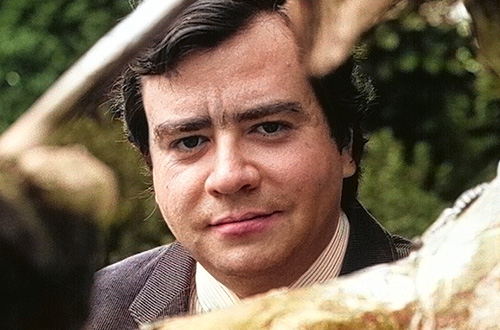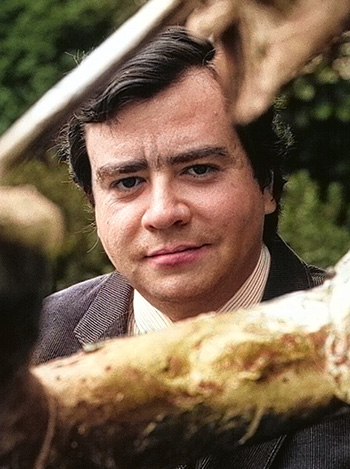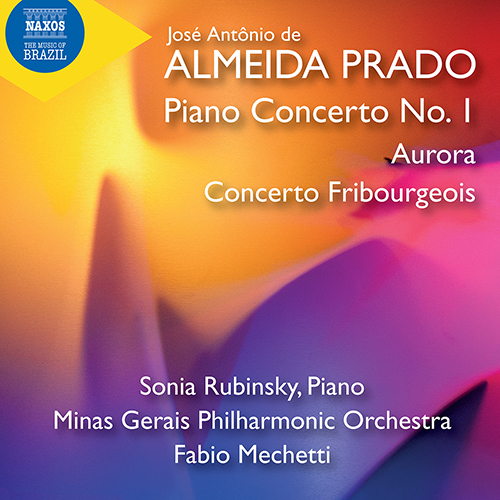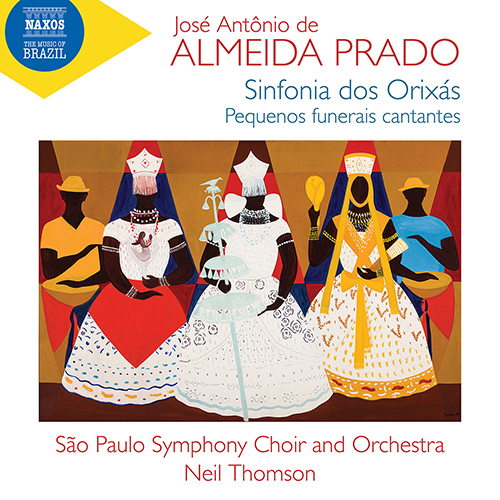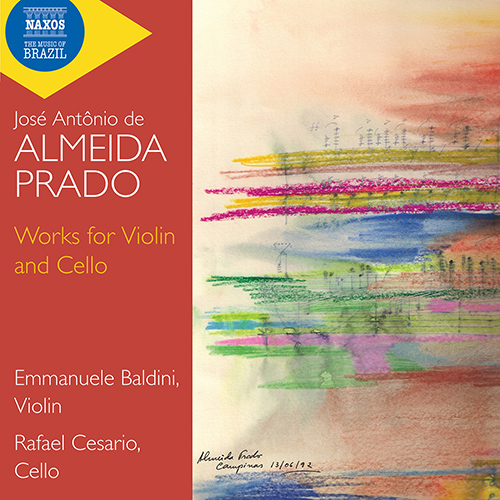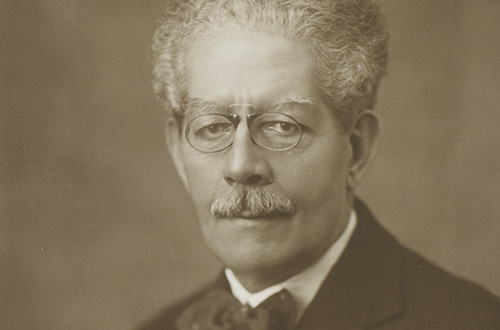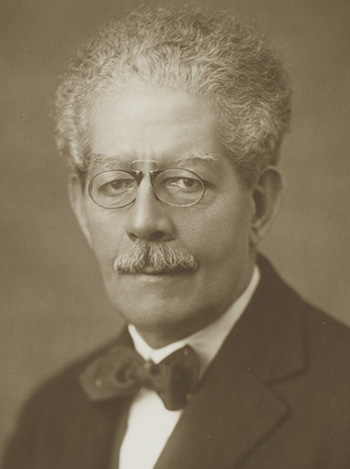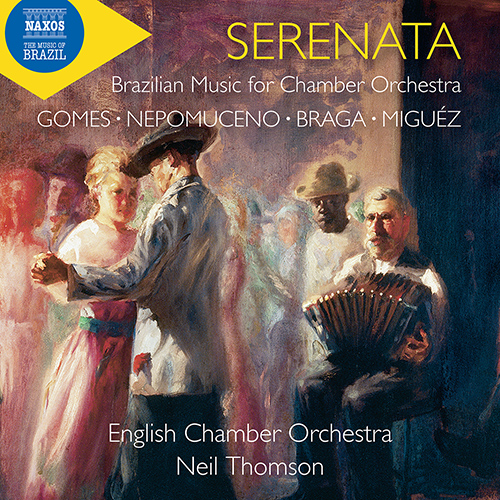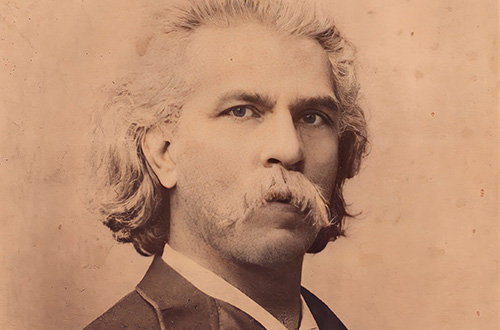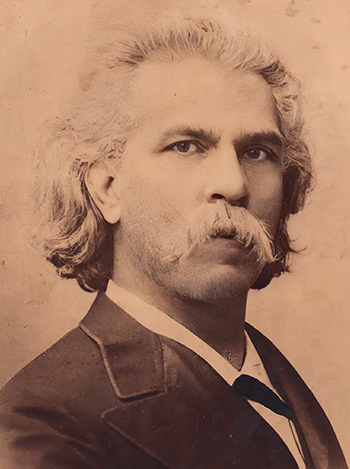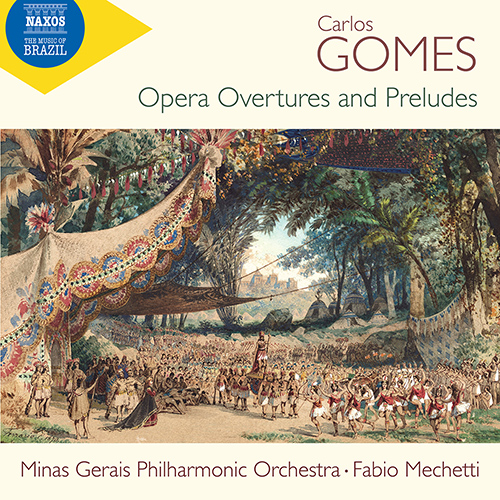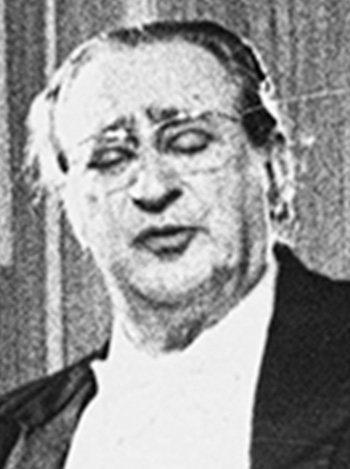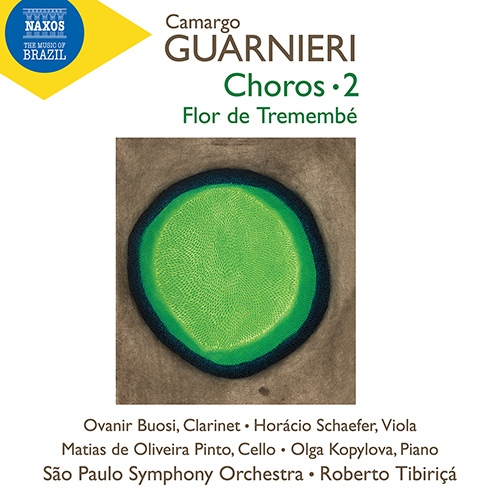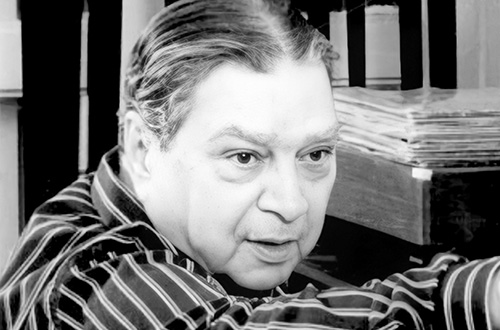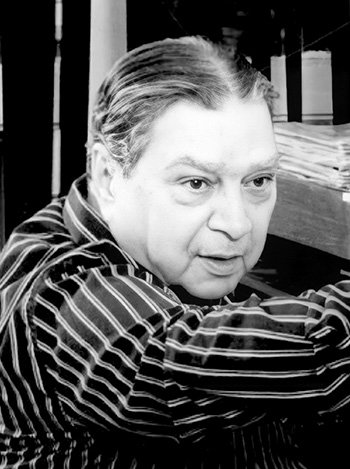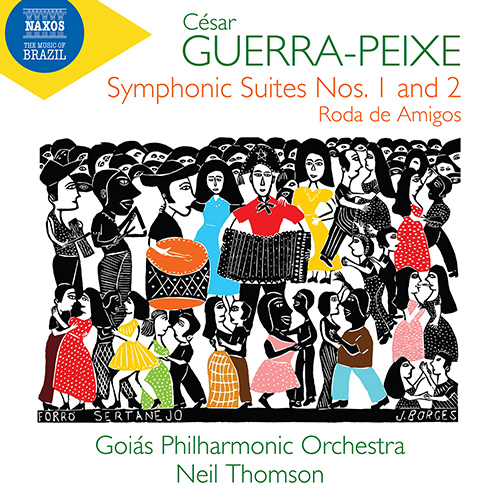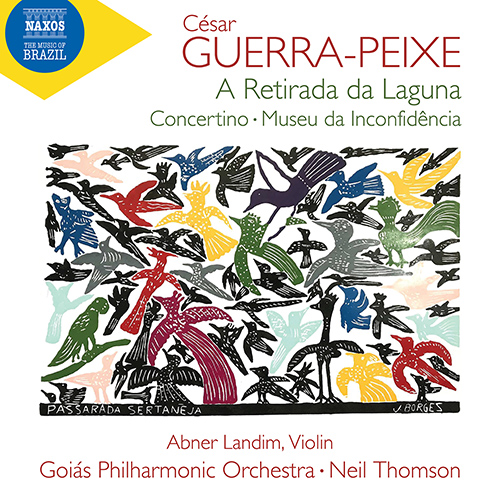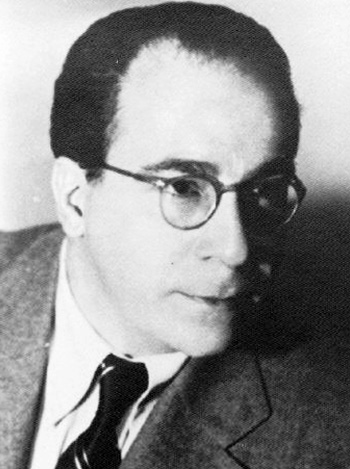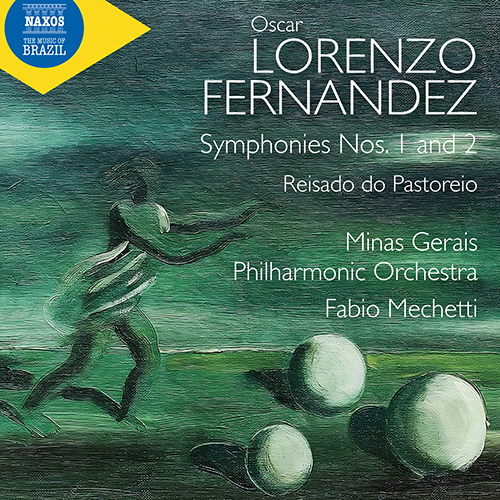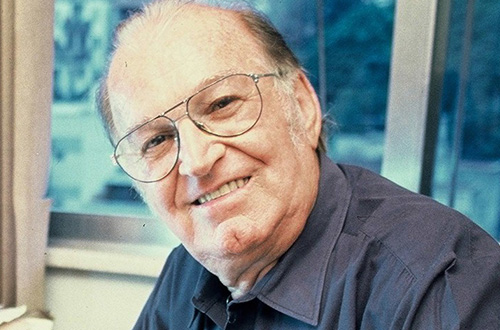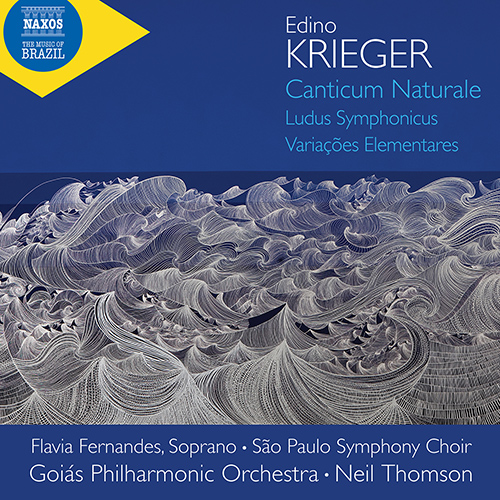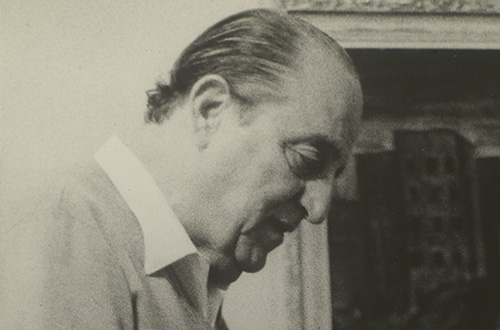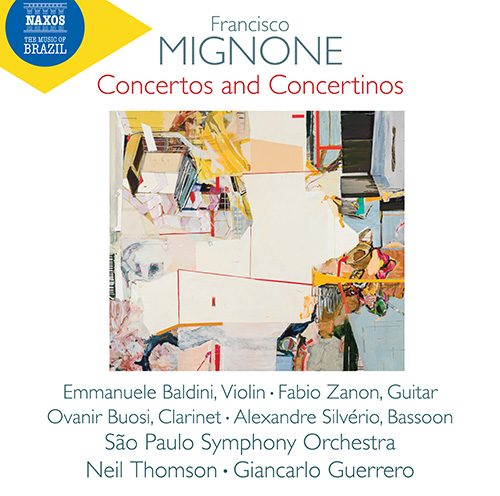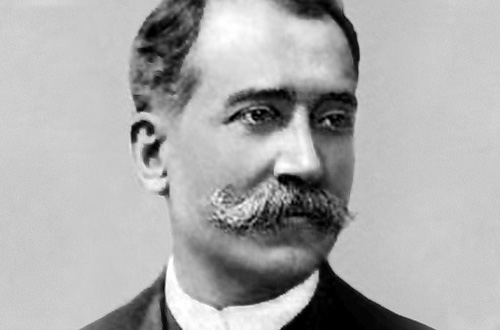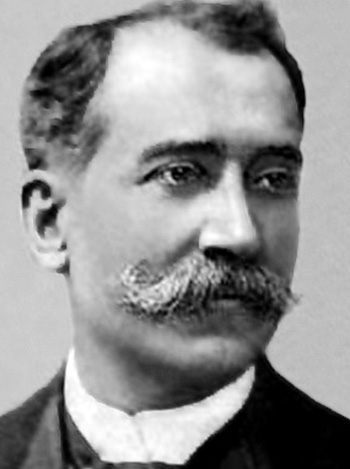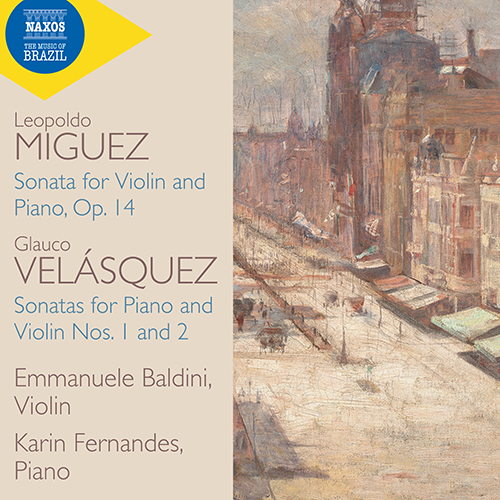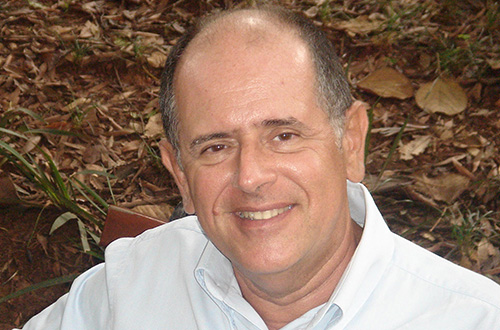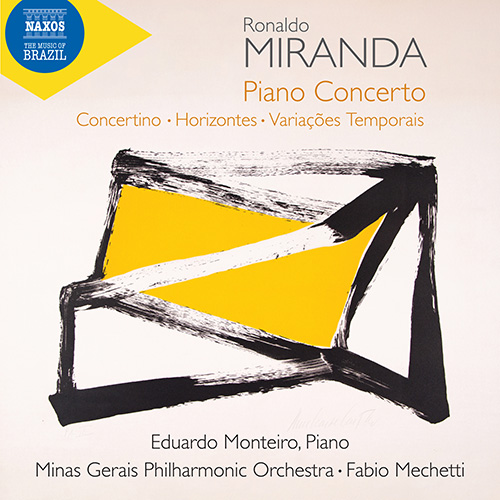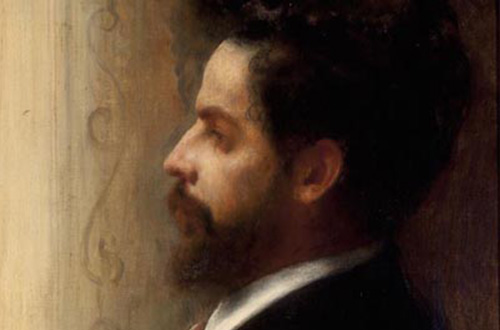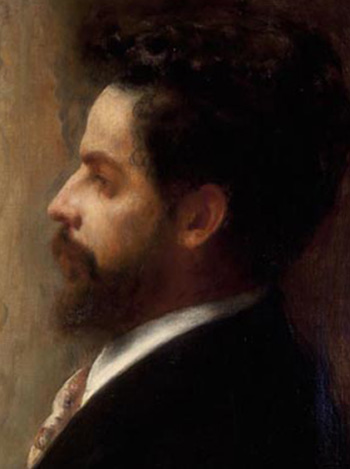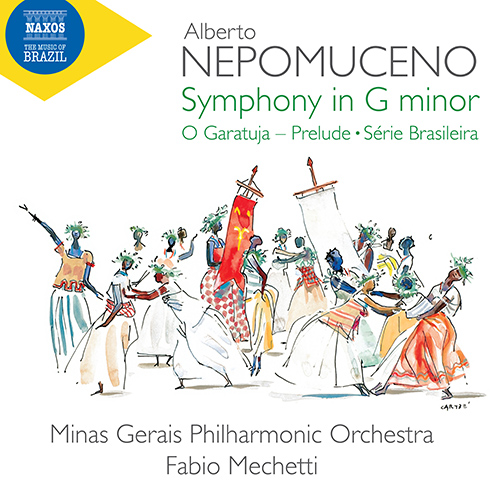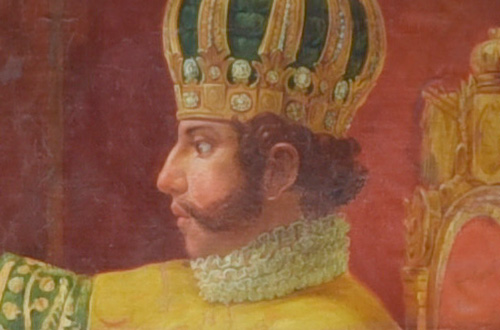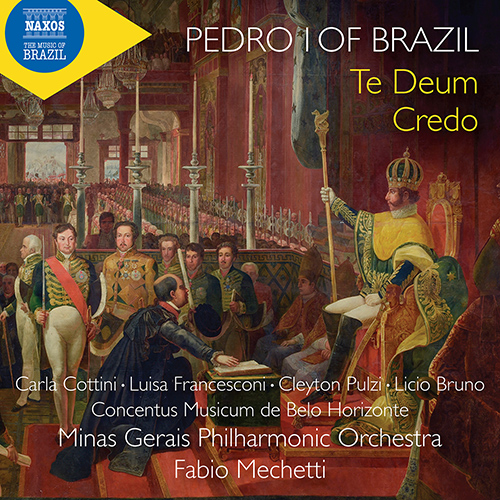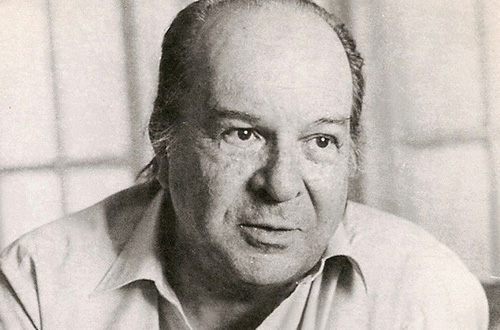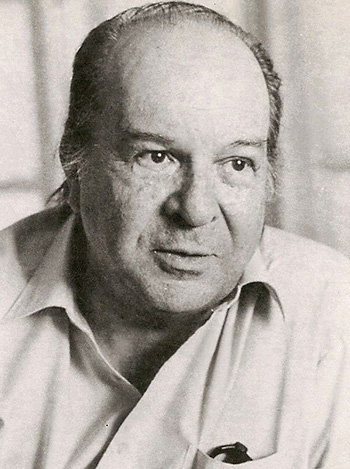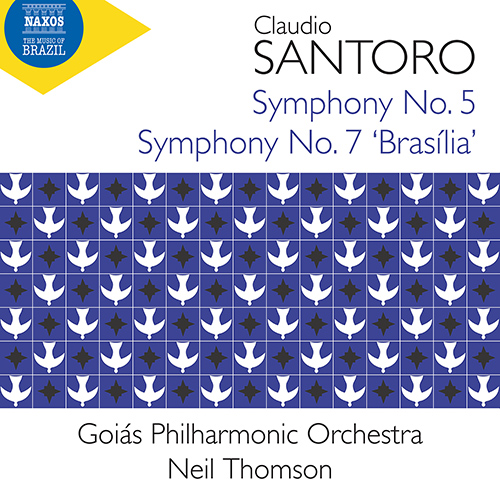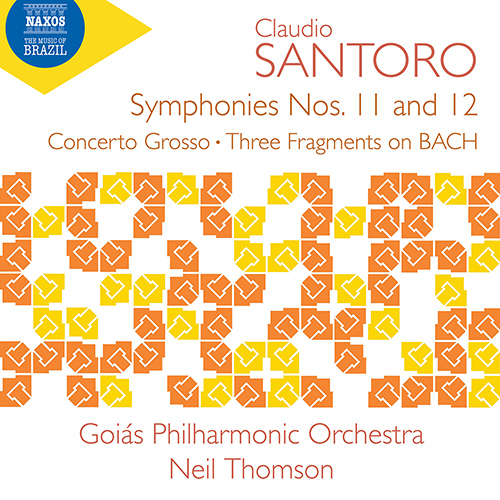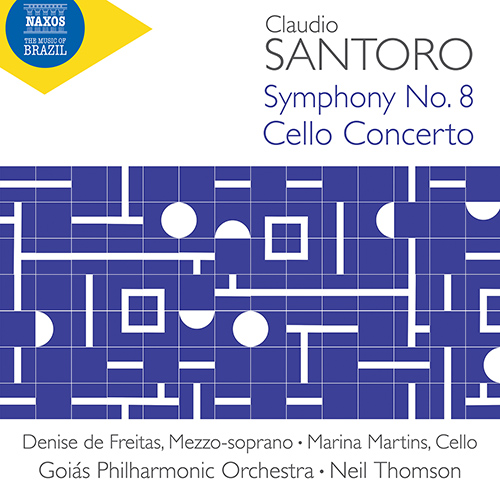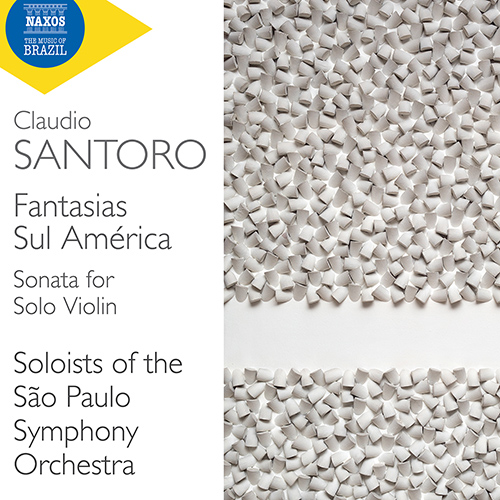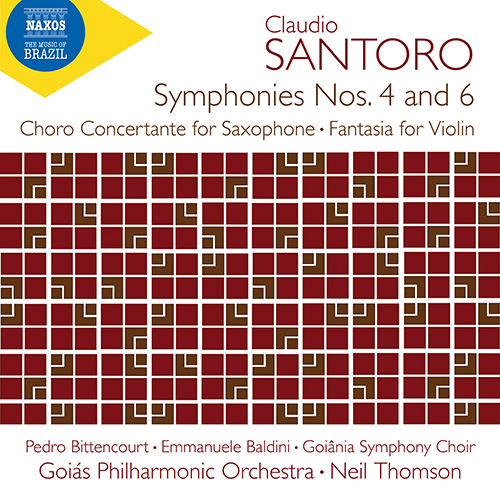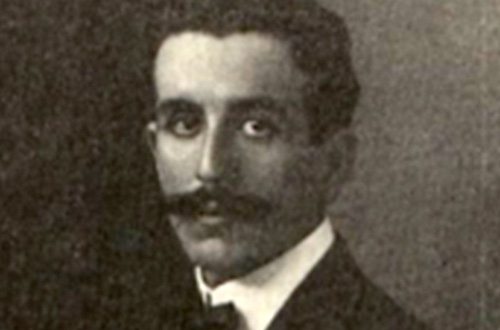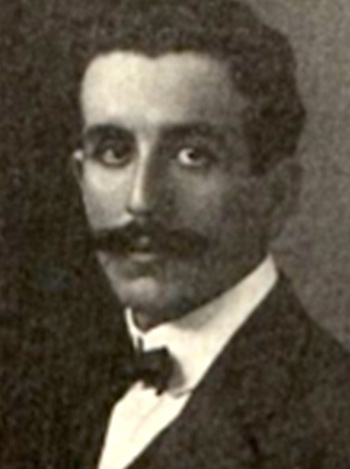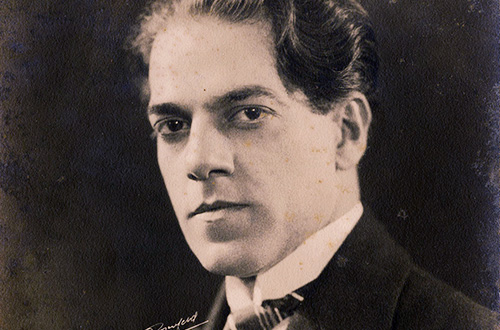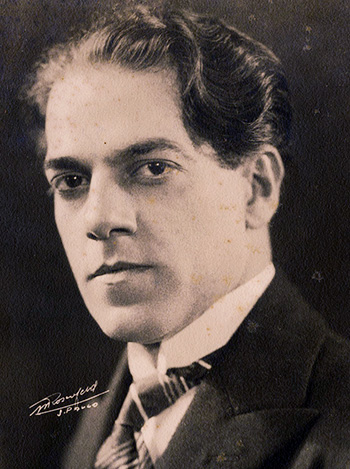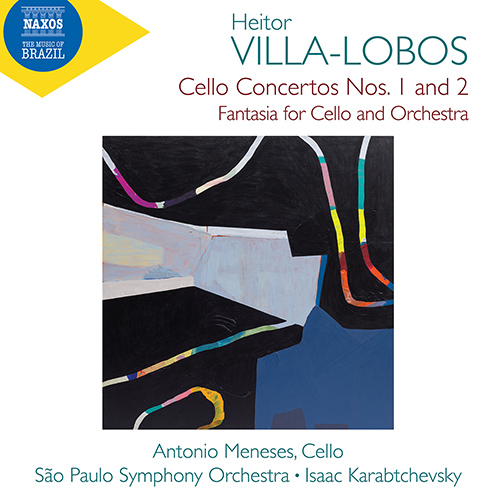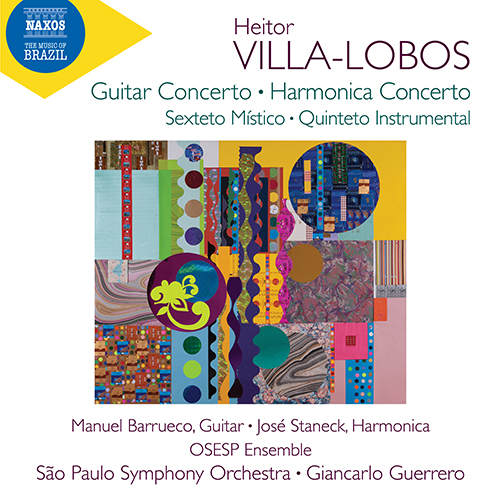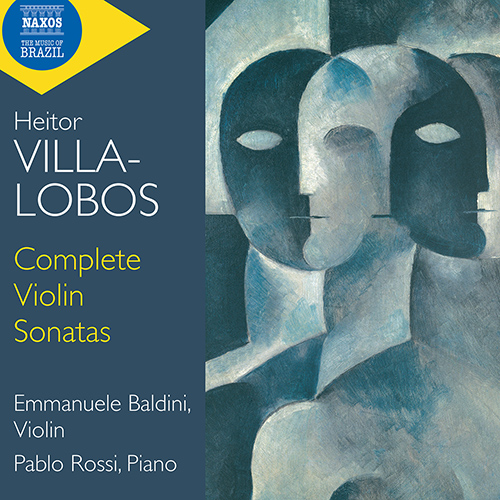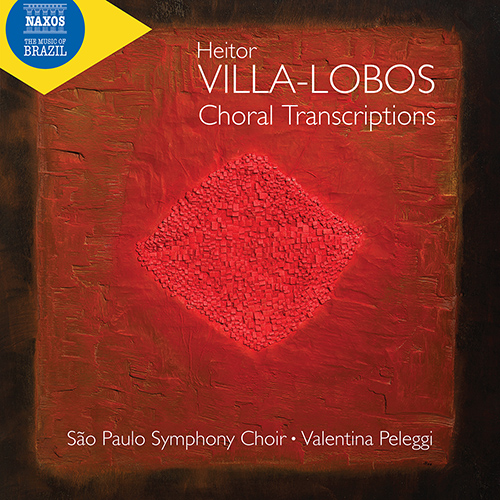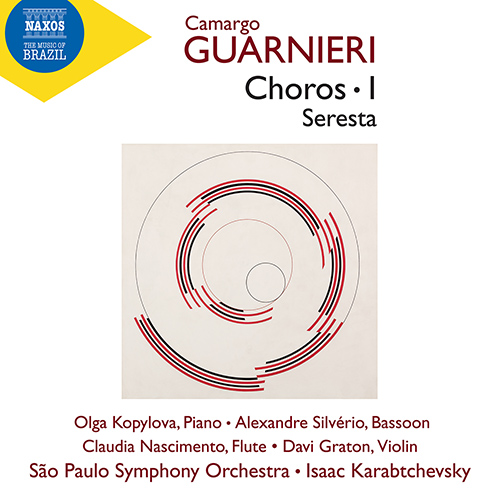
The Music of Brazil
Ronaldo MIRANDA (b. 1948)
Piano Concerto *
Concertino * • Horizontes • Variações Temporais
Eduardo Monteiro, Piano *Minas Gerais Philharmonic Orchestra
Fabio Mechetti
Ronaldo Miranda is a multi-award-winning Brazilian composer with works commissioned by leading artists and institutions. His music is regularly performed in prestigious venues in Brazil and around the world. Miranda’s Piano Concerto is an exciting virtuoso blend of atonality alongside hints of Bartók, contrasting with the flowing scales and delicate patterns found in the Concertino. The prize-winning Horizontes is a symphonic poem that tells the story of Christopher Columbus’s voyage to the New World, while Variações Temporais (Beethoven Revisitado) is an inventive set of variations on some of Beethoven’s most famous motifs and themes.
Francisco MIGNONE (1897–1986)
Complete Violin Sonatas
Emmanuele Baldini, ViolinLucas Thomazinho, Piano
Francisco Mignone was a leading figure in the Brazilian music scene of the 20th century, with a free-flowing style and gift for melody that instantly communicated with audiences. He was part of the first generation of modernist Brazilian composers that included Villa-Lobos and Guarnieri. Mignone’s two early unnumbered sonatas emulate the French influence of Fauré and Debussy, but it was not until the 1960s that he returned to the genre. The First and Second Sonatas share a fragmented, experimental character that juxtapose varying forms of tonality and metre, while the Third Sonata features national rhythmic and melodic elements. These sonatas represent some of the most significant works for violin and piano to come from Brazil.
Claudio SANTORO (1919–1989)
Complete Piano Sonatas
Alessandro Santoro, Piano
Written over a 46-year period, Claudio Santoro’s six piano sonatas document the evolution of his creative and formal skills – together they present a survey of the composer’s entire aesthetic development. Always radiating a forceful inner power and with expressive lyricism at their heart, the early sonatas explore twelve-note technique as a unifying element, transitioning to a distinctive Brazilian nationalist character by the Third and Fourth sonatas. The Fifth Sonata, from the end of Santoro’s life, is a synthesis of the various idioms he had used over the decades. This is the first complete recording of Santoro’s piano sonatas, performed by the composer’s son, Alessandro Santoro.
Claudio SANTORO (1919–1989)
Symphonies Nos. 4 and 6
Choro Concertante for Saxophone *
Fantasia for Violin **
Pedro Bittencourt, tenor saxophone * • Emmanuele Baldini, violin ** Goiânia Symphony ChoirGoiás Philharmonic Orchestra • Neil Thomson
The fourth volume in this series explores a pivotal decade in Claudio Santoro’s compositions. In the 1950s he moved from serialism towards nationalism starting with the transitional, reflective Canto de Amor e Paz (‘Song of Love and Peace’) and continuing with Symphony No. 4 which proved to be one of his most accessible and influential works. His Symphony No. 6 of 1958 is short but original, luminous and sombre by turns. The concertante works for saxophone and violin show Santoro’s command of dance rhythms, colourful lyricism and virtuosity.
Francisco MIGNONE (1897–1986)
Concertos and Concertinos
Emmanuele Baldini, Violin • Fabio Zanon, GuitarOvanir Buosi, Clarinet • Alexandre Silvério, Bassoon
São Paulo Symphony Orchestra
Neil Thomson • Giancarlo Guerrero
Sentimental, dynamic, exuberant, multi-talented and extremely eclectic, Francisco Mignone, whose Italian background brought a sense of universality to his musical nationalism, was a leading figure in the Brazilian music scene during the 20th century. The Clarinet Concertino and Bassoon Concertino share a nationalist idiom: the dialogues between soloist and orchestra extend into expressive duets with the exciting use of rapid embolada – a Brazilian form of poetry and song. The elegant Guitar Concerto is filled with drama and vitality, while the Violin Concerto was summed up by one critic as ‘the greatest work of this challenging genre in the history of Brazilian music’.
Oscar LORENZO FERNANDEZ (1897–1948)
Symphonies Nos. 1 and 2
Reisado do Pastoreio
Minas Gerais Philharmonic OrchestraFabio Mechetti
Restless and dynamic by nature, Oscar Lorenzo Fernandez was a key figure in the cultural life of Rio de Janeiro, founding numerous influential musical institutions both journalistic and educational. He gained international fame for the primordial power of Batuque, the final dance movement of his Afro-Brazilian influenced Reisado do Pastoreio suite. Without ever abandoning his Brazilian roots, in his later career Lorenzo Fernandez moved away from explicit nationalism towards a more universalist idiom as can be heard in the vigorously themed and atmospheric First Symphony of 1945 and the programmatic Second Symphony, inspired by the life and death of the heroic 17th-century explorer Fernão Dias Paes Leme.
César GUERRA-PEIXE (1914–1993)
A Retirada da Laguna
Concertino * • Museu da Inconfidência
Abner Landim, Violin *Goiás Philharmonic Orchestra • Neil Thomson
César Guerra-Peixe is one of the leading composers associated with musical nationalism in Brazil. A Retirada da Laguna is a programmatic suite that describes one of the most dramatic moments in the Paraguayan War of 1864–70, while his Concertino is a clever hybrid between folk music timbres and sophisticated high art ambitions. Museu da Inconfidência is one of the composer’s most admired works, taking us through a museum of 18th-century rebellion and heroism. Guerra-Peixe’s Symphonic Suites Nos. 1 and 2 can be heard on Naxos 8.573925, acclaimed by ClassicsToday.com as ‘absolutely world-class’.
José Antônio de ALMEIDA PRADO (1943–2010)
Works for Violin and Cello
Emmanuele Baldini, Violin • Rafael Cesario, Cello
José Antônio de Almeida Prado was one of the most prolific and creative Brazilian composers of the second half of the 20th century, finding inspiration in everything from the birdsong and forests of his native country to a contemplation of the galaxies. The evocative Le Livre magique de Xangô is considered a foundational work in Almeida Prado’s final, eclectic postmodern phase, during which folk music also re-emerged in works such as Das Cirandas. The lively Solo Violin Sonata and lyrical Capriccio both explore the violin’s full expressive potential, while The Four Seasons tests the skill of younger players.
Edino KRIEGER (1928–2022)
Canticum Naturale *
Ludus Symphonicus • Variações Elementares
Flavia Fernandes, Soprano * • São Paulo Symphony ChoirGoiás Philharmonic Orchestra • Neil Thomson
Edino Krieger was a leading figure in Brazilian music as both composer and arts director who influenced a generation of his compatriots during his long life. Krieger’s works can be divided into three phases: serial, neo-Classical, and a fascinating synthesis of traditionalism and the avant-garde. From the second category comes the transitional Variações Elementares whereas his final creative phase, his peak of artistic maturity, is represented by the remainder of the programme. Included is one of his most emblematic pieces, Canticum Naturale, an expansive Amazonian painting in sound, and the virtuosic and expressive Ludus Symphonicus.
Antônio Carlos GOMES (1836–1896)
Opera Overtures and Preludes
Minas Gerais Philharmonic Orchestra • Fabio Mechetti
Carlos Gomes was not only Brazil’s leading operatic composer, but he also helped pave the way for Italian verismo during the latter part of the 19th century. The preludes and overtures from his operas chart a course from early experimentation with orchestral sonority to a new conception of atmosphere and tension in his historically based dramas. In Alvorada (‘Dawn’) from Lo schiavo his descriptive writing comes close to the status of a symphonic poem. The music from his greatest artistic triumph, Il Guarany, weaves themes into an organic whole, while his final opera, Condor, is reminiscent of French orchestral music in its employment of whole-tone scales.
‘The Minas Gerais Philharmonic play with precision and flair for their founding director and conductor Fabio Mechetti – and, crucially, they make magic in the many hushed moments.’
– Gramophone
‘Fabio Mechetti leads Brazil’s Minas Gerais Philharmonic Orchestra in a performance that combines precision, elegance, and passion, and draws the very best of this excellent ensemble.’
– All About the Arts
César GUERRA-PEIXE (1914–1993)
Symphonic Suites Nos. 1 and 2 • Roda de Amigos *
Raul Menezes, Flute * • Públio da Silva, Oboe *Patrick Viglioni, Clarinet * • Felipe Arruda, Bassoon *
Goiás Philharmonic Orchestra • Neil Thomson
César Guerra-Peixe was one of the most versatile Brazilian musicians of the 20th century, gaining a particular mastery of orchestration and creating his own inimitable sound through extensive work in radio, television and cinema. The toe-tapping dance rhythms and lyrical expressiveness in his two Symphonic Suites were inspired by research into Brazilian folk traditions, further enhanced by a broad range of vibrantly eloquent global influences. The lighthearted Roda de Amigos mischievously caricatures Guerra-Peixe’s musical circle of friends and their various woodwind instruments.
‘This may be the finest release to date in Naxos’ ongoing Brazilian music series. Kudos to the woodwind soloists of the Goiás Philharmonic, who sound absolutely world-class in each of their turns in the spotlight. Indeed, conductor Neil Thomson galvanizes his forces to deliver performances of all of this music that, in their clarity, vitality and drive, present this splendid music in the best possible light, and the sonics are really vivid too.’
– ClassicsToday.com
Alberto NEPOMUCENO (1864–1920)
Symphony in G minor • O Garatuja – Prelude • Série Brasileira
Minas Gerais Philharmonic Orchestra • Fabio Mechetti
Alberto Nepomuceno was a herald of Brazilian musical nationalism. He was one of the first composers in his country to employ elements of folklore in his compositions, he encouraged younger composers such as Villa-Lobos, and his music was conducted by Richard Strauss. The Prelude to O Garatuja, an incomplete opera, is one of his best-known works and an example of a truly Brazilian lyric comedy. Série Brasileira is a vivacious suite that employs maxixe rhythms and ends with the feverish batuque dance, while the Symphony in G minor is one of the earliest such examples by a Brazilian, a heroic and lyric structure revealing the influence of Brahms.
‘This is the first instalment in what’s promised to be a 30-disc survey of Brazilian music… If subsequent volumes maintain the high standards heard here, we have a lot to look forward to. Urgently recommended.’
– Gramophone Choice
‘Fabio Mechetti did a great job… We still have this record to applaud the quality of the orchestra, that of the conductor and the music of Nepomuceno.’
– Diapason
Claudio SANTORO (1919–1989)
Symphonies Nos. 5 and 7 ‘Brasília’
Goiás Philharmonic Orchestra • Neil Thomson
Claudio Santoro was one of Brazil’s most eminent and influential composers. Over a 50-year period, he wrote a cycle of 14 symphonies that is widely acclaimed as the most significant cycle of its kind ever written in Brazil. The two selected works in this inaugural volume of the first complete recording of his symphonies focus on the 1950s, a period when Santoro sought a more direct and communicative idiom using Brazilian elements. His use of folk-based material is nonetheless highly creative, sometimes indeed abstract, as in key moments of Symphony No. 5. Symphony No. 7 is one of his most complex and intense works, a celebration of his country’s new capital Brasília in music of striking modernity.
‘Here is a 20th century composer partially obscured by the modernist death grip on concert programming of those days. His revival is a most positive development and has been greeted with commercial success.’
– AllMusic.com ★★★★
‘The performances by the Goiás Philharmonic Orchestra under its principal conductor Neil Thomson are first-class, as is the quality of the recording.’
– Gramophone
Claudio SANTORO (1919–1989)
Symphonies Nos. 11 and 12
Concerto Grosso • Three Fragments on BACH
Goiás Philharmonic Orchestra • Thomson
Claudio Santoro’s prolific output includes a cycle of 14 symphonies that is widely recognised as the most significant of its kind from Brazil. All of the works in this programme come from Santoro’s remarkable final decade, in which he allied more traditional and eclectic styles to his earlier experiments. Both the Concerto Grosso and the Three Fragments on BACH were written for student orchestras, but are nonetheless substantial pieces which show his command of writing for strings. The Eleventh Symphony is one of the densest and most dramatic of the cycle, its finale exploding into an evocation of the opening of Brahms’ First Symphony, while the Twelfth Symphony is an unusual ‘sinfonia concertante’ for nine soloists and orchestra.
‘These impressive and rarely heard works are all played with absolute conviction and panache by the Goiás Philharmonic under Neil Thomson, and the recordings are crystal-clear.’
– Gramophone
Claudio SANTORO (1919–1989)
Symphony No. 8 1 • Cello Concerto 2
Três Abstrações • Interações Assintóticas
Denise de Freitas, Mezzo-soprano 1 • Marina Martins, Cello 2Goiás Philharmonic Orchestra • Neil Thomson
The 1960s proved to be a significant decade in Claudio Santoro’s ever-eventful life. The charged atmosphere of the Cello Concerto can be attributed to his experiences in East Berlin at the moment construction started on the Berlin Wall. Despite its challenging solo writing, the concerto is the most symphonically proportioned of all his concertante works. Exceptionally for Santoro, the dramatic Eighth Symphony combines serial techniques with an openly Expressionist idiom. Três Abstrações explores timbres and dynamic contrasts with string orchestra, while Interações Assintóticas is Santoro’s only work to use quarter-tone tuning for some remarkable effects.
José Antônio de ALMEIDA PRADO (1943–2010)
Piano Concerto No. 1 • Aurora • Concerto Fribourgeois
Sonia Rubinsky, Piano • Minas Gerais Philharmonic Orchestra • Fabio Mechetti
At the time of his death in 2010, Almeida Prado was one of Brazil’s most internationally admired composers, one who created music of unique sonority and colour, rooted in his native country. In Aurora (‘Dawn’) he employs his newly developed ‘transtonality’ to radiant effect, while the Concerto Fribourgeois features a collage technique. In his Piano Concerto No. 1 Almeida Prado explores a cogent structure in which the soloist opens up, rips apart or transforms the theme and variations, in a work that is both grandiose and luminous.
‘This collection of works for piano and orchestra showcases the composer’s startling musical imagination and is performed with mastery and poise by Brazilian pianist Sonia Rubinsky and the Minas Gerais Philharmonic Orchestra.’
– BBC Music Magazine ★★★★
‘Pianist Sonia Rubinsky possesses a phenomenal technique, an immeasurable palette of colours in her touch and an irrepressible spirit. She is thus somewhat reminiscent of her colleague Martha Argerich.’
– www.klassik.com
Camargo GUARNIERI (1907–1993)
Choros, Vol. 1 • Seresta
Davi Graton, Violin • Claudia Nascimento, Flute • Alexandre Silvério, Bassoon • Olga Kopylova, Piano • São Paulo Symphony Orchestra • Isaac Karabtchevsky
Camargo Guarnieri’s catalogue of works represents a legacy of incalculable worth for Brazilian culture, as has his influence as a teacher on several generations of younger composers. His association with the poet and musicologist Mário de Andrade led to the birth of the Brazilian Nationalist School and the ideals of using traditional Brazilian music in classical forms. The series of seven Choros and the Seresta for Piano and Orchestra represent Guarnieri’s personal approach to the concerto form, with striking contrasts between potent rhythm and dense, emotionally charged soundscapes and melodies full of Brazilian inspiration. This volume forms part of the first complete recording of the Choros.
‘Isaac Karabtchevsky and the São Paulo Symphony, who were responsible for the complete and splendid Villa-Lobos symphony for Naxos, together with the main soloists, offer an authentic performance in the service of the man Copland defined as “the most interesting ‘unknown’ talent in South America”.’
– Scherzo
‘The performances are excellent. The soloists are members of the São Paulo orchestra and Isaac Karabtchevsky boasts a long pedigree in conducting Brazilian music. (He led the same orchestra in Naxos’ first-rate series of the complete Villa-Lobos symphonies.)’
– Fanfare
Camargo GUARNIERI (1907–1993)
Choros, Vol. 2 • Flor de Tremembé
Ovanir Buosi, Clarinet • Horácio Schaefer, ViolaMatias de Oliveira Pinto, Cello • Olga Kopylova, Piano
São Paulo Symphony Orchestra • Roberto Tibiriçá
In his Choros, Guarnieri wrote music that conjures up the landscape and essence of Brazil. These very personal concertos reveal the composer’s refined instrumental combinations and elegant contrapuntal writing, while their dance rhythms are vivacious, drawing on the baião, maracatu and embolada. The Choros in this second volume represent all stages of Guarnieri’s compositional development. Also included is the delightful and inventive Flor deTremembé, an early work with choro-like features.
‘Performances throughout are thoroughly idiomatic and the four soloists genuinely seem to revel in the music. Roberto Tibiriçá guides them through it with the sureness of one who knows the scores inside out, and the recording...is both clear and resonant.’
– Gramophone
‘These pieces represent the lifework of the composer who tried to integrate modernism with his musical roots – folk elements, and his own personality. The soloists and the orchestra play with virtuosity and devotion.’
– Record Geijutsu
Claudio SANTORO (1919–1989)
Symphony No. 8 1 • Cello Concerto 2
Três Abstrações • Interações Assintóticas
Denise de Freitas, Mezzo-soprano 1 • Marina Martins, Cello 2Goiás Philharmonic Orchestra • Neil Thomson
The 1960s proved to be a significant decade in Claudio Santoro’s ever-eventful life. The charged atmosphere of the Cello Concerto can be attributed to his experiences in East Berlin at the moment construction started on the Berlin Wall. Despite its challenging solo writing, the concerto is the most symphonically proportioned of all his concertante works. Exceptionally for Santoro, the dramatic Eighth Symphony combines serial techniques with an openly Expressionist idiom. Três Abstrações explores timbres and dynamic contrasts with string orchestra, while Interações Assintóticas is Santoro’s only work to use quarter-tone tuning for some remarkable effects.
Heitor VILLA-LOBOS (1887–1959)
Guitar Concerto • Harmonica Concerto
Sexteto Místico • Quinteto Instrumental
Manuel Barrueco, Guitar • José Staneck, Harmonica • OSESP EnsembleSão Paulo Symphony Orchestra • Giancarlo Guerrero
The concertos and chamber works on this album show Villa-Lobos’ unceasing enthusiasm for new colours and sonorities in his music. The Concerto for Guitar and Small Orchestra was his last work for the instrument and written for Segovia. A cornerstone of the repertoire, it contains soaring melodies and rhythmic vitality couched in virtuosic writing. Exploring the instrument’s full harmonic and chromatic possibilities, the Concerto for Harmonica is also deftly orchestrated. New and daring sonic combinations are to be heard in the two chamber works demonstrating the composer’s extraordinary gift for seductive lyricism.
‘The uniformly first-rate performances by members of the São Paulo Symphony under the vital and sensitive direction of Giancarlo Guerrero are excellently engineered, making the whole disc a joy from start to finish – a true voyage of discovery and delight.’
– ClassicsToday.com
‘Villa-Lobos’ enthusiasm for new colours and textures is on display in this new release of concerti and chamber works… Villa-Lobos has a genuine claim to historical significance, and is by far the most well-known South American composer.’
– Limelight ★★★★
Heitor VILLA-LOBOS (1887–1959)
Cello Concertos Nos. 1 and 2
Fantasia for Cello and Orchestra
Antonio Meneses, CelloSão Paulo Symphony Orchestra • Isaac Karabtchevsky
The Cello Concerto No. 1 was Villa-Lobos’s first major orchestral work. Filled with youthful energy and displaying an eclectic style, it is the sound of the composer finding his voice. Three decades later and with his reputation at its height, the inspired melodies and flowing style of the Fantasia sees Villa-Lobos giving free rein to his vivid imagination. Composed for the Brazilian cellist Aldo Parisot, the no less inventive and lushly scored Cello Concerto No. 2 from 1953 suggests man’s solitude when facing the vastness of nature.
Serenata – Brazilian Music for Chamber Orchestra
GOMES • NEPOMUCENO• BRAGA • MIGUÉZ
English Chamber Orchestra • Neil Thomson
Brazilian composers in the 19th century often sought state scholarships to enable them to study in Europe where they were to become influenced by the German, Italian and French compositional schools. They also became involved in the vogue for writing suites based on ancient dances, such as Nepomuceno’s delightful Ancient Suite, premiered at Grieg’s home, or Braga’s Madrigal-Pavana which evokes the belle époque ballrooms of Rio de Janeiro. Miguéz’s Suite in the Old Style is polyphonic and lively, while Gomes’ Sonata for Strings is his finest non-operatic work.
‘…Neil Thomson and the English Chamber Orchestra are on top form here.’
– Fanfare
Leopoldo MIGUEZ (1850–1902) • Glauco VELÁSQUEZ (1884–1914)
Sonatas for Violin and Piano
Emmanuele Baldini, Violin • Karin Fernandes, Piano
Leopoldo Miguez and Glauco Velásquez were both leading figures in Brazil’s classical music scene at the turn of the 20th century, bringing back influences from Europe to a homeland in a state of enormous social upheaval. The lyrical character of Miguez’s ambitious Violin Sonata, Op. 14 is developed in a far more sophisticated and contrapuntal manner to anything previously experienced in Brazil, while Velásquez’s two sonatas are even richer in nuance. The tropical Romanticism of these three works marked an important change in Brazil’s chamber music, from pieces intended largely for domestic use to works equal to the noble expression of its new Republic.
‘The huge orchestral piano playing is refreshing, dwarfing the violin sometimes, as it should. Interweaving lines are passed off artfully between the instruments. There is a steady graininess to the violin sound … This is a fine reading and brilliant playing.’
– American Record Guide
‘Internationally acclaimed, Italian violinist-conductor Emmanuele Baldini and
award-winning, Brazilian pianist Karin Fernandes deliver technically accomplished, passionate accounts of these little-known works. Both artists give careful attention to dynamics, phrasing and rhythmic detail, thereby bringing out all the delicate nuances that abound in this music.’
– Classical Lost and Found
Claudio SANTORO (1919–1989)
Fantasias Sul América
Sonata for Solo Violin
Soloists of the São Paulo Symphony Orchestra
Claudio Santoro was one of Brazil’s leading composers, having written a considerable amount of solo, chamber and orchestral music, including arguably the most important symphonic cycle ever written in that country. The fifteen Fantasias Sul América, composed as competition pieces for individual instruments, represent fascinating syntheses of his style heard in compressed form. Freely atonal and highly virtuosic, these pieces are now standard repertoire for Brazilian soloists, and were even used later by Santoro as material for his Symphony No. 12 (Naxos 8.574406). The youthful Sonata for Solo Violin is a work of extraordinary density and experimentation that reveals an aesthetically consistent dialogue with the much later Fantasias.
‘Performances throughout are faultless; it would be truly wonderful if these works could become more widely known as a consequence of such fine recordings.’
– Gramophone
Heitor VILLA-LOBOS (1887–1959)
Complete Violin Sonatas
Emmanuele Baldini, Violin • Pablo Rossi, Piano
Heitor Villa-Lobos’ three violin sonatas date from a key period in his career: the moment at which he matured as a composer, established his personal idiom and achieved his first professional triumphs. Each sonata shares some influence from French late Romanticism or Impressionism, as well as revealing Villa-Lobos’ skill as a string player. The First Violin Sonata’s subtitle of Désespérance (‘Despair’) suits its melancholy lyricism, while the ‘infinite abundance of musical ideas’ in the Second Violin Sonata is characterised by a wide range of emotions. The sophisticated Third Violin Sonata is steeped in the influence of Debussy, but also anticipates Villa-Lobos’ new directions in the 1920s.
‘The insight and commitment of Emmanuele Baldini and Pablo Rossi help make the release an attractive proposition for those new to this music.’
– Gramophone
‘The performers succeed in presenting Villa-Lobos’ music in well-structured and carefully shaped interpretations.’
– Pizzicato ★★★★
PEDRO I of Brazil (1798–1834)
Te Deum • Credo • Hino da Independência do Brasil
Carla Cottini, Soprano • Luisa Francesconi, Mezzo-soprano • Cleyton Pulzi, Tenor • Licio Bruno, Bass-baritoneConcentus Musicum de Belo Horizonte • Minas Gerais Philharmonic Orchestra • Fabio Mechetti
Dom Pedro I was the first Emperor of Brazil, proclaiming its independence from Portugal in 1822. A gifted musician, Pedro I is one of only a few monarchs to have become known as a composer. A performance of his Abertura (‘Overture’) was organised in Paris in 1832 with some in the audience convinced that it had been composed by Rossini, while the Hino da Independência do Brasil (‘Hymn to the Independence of Brazil’) remains one of the country’s best-loved anthems. Operatic in character, the Te Deum celebrated the baptism of Pedro’s first son, and the joyous Credo is one of his most frequently performed works.
‘The sure orchestral direction of Fabio Mechetti and the choir, prepared by Iara Fricke Matte, provide a triumphant demonstration of how far understanding of the performance of repertoire from the 18th century in Brazil has come over the past few decades, and the recorded sound, captured at the Sala Minas Gerais in Belo Horizonte, is exemplary.’
– Gramophone
José Antônio de ALMEIDA PRADO (1943–2010)
Sinfonia dos Orixás
Pequenos funerais cantantes *
Clarissa Cabral, Mezzo-soprano * • Sabah Teixeira, Bass-baritone *São Paulo Symphony Choir • São Paulo Symphony Orchestra
Neil Thomson
José Antônio de Almeida Prado was one of the most admired Brazilian composers of his time. The two stylistically diverse works featured on this album exemplify different creative periods in the composer’s life. The prize-winning Pequenos funerais cantantes, which was Almeida Prado’s breakthrough as a composer, is a lament full of unique soundworlds forged from different combinations of choral and orchestral writing. The superbly orchestrated Sinfonia dos Orixás takes as its subject the Orishas (deities in the Yoruba religion) – and is a personal tribute to the rich Afro-Brazilian religious traditions, a sumptuous melodic and rhythmic feast celebrating the forces of nature.
‘Neil Thomson is an excellent conductor who fully enters the spirit of these scores… This is certainly one of the most interesting and culturally important releases ever put on the market.’
– The Art Music Lounge
Heitor VILLA-LOBOS (1887–1959)
Choral Transcriptions
São Paulo Symphony Choir • Valentina Peleggi
Choral music holds a central position in Villa-Lobos’ catalogue of works, but among these famous pieces is a series of little-known transcriptions for a cappella choir taken from the standard classical repertoire. They were intended for a teachers' chorus and for use in schools, and through astonishing alchemy they achieve a true ‘orchestration’ of largely piano originals, adding a fresh new repertoire for vocal ensembles. This album also includes the first ever recording of Villa-Lobos’ complete set of a cappella transcriptions from Bach’s The Well-Tempered Clavier.
‘Under the astute direction of Valentina Peleggi, the São Paulo Symphony Choir brings a warm, rich sound to their task. They are at their best in the slow, lyrical vein of works like Mendelssohn's Song Without Words.’
– Limelight ★★★★
‘The São Paulo Symphony Choir invests everything it does with a quality which somehow reflects Villa-Lobos’ dominant spirit within Brazilian music.’
– Choir & Organ ★★★★

